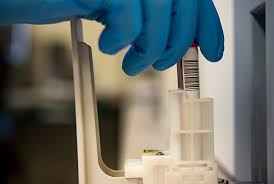Panning for antibiotics that stand out
Despite their importance in modern medicine, antibiotics are under constant threat as pathogens adapt, acquire, or evolve resistance with chilling regularity. Finding new molecules and mechanisms is one way that we can keep ahead. Panning genomes enriched in secondary metabolites, Wang et al. used a computational approach to predict the structure of a cyclic nonribosomal lipopeptide antibiotic, which they named “cilagicin” (see the Perspective by Seipke). Chemical synthesis of the predicted peptide revealed potent and broad antimicrobial activity against Gram-positive bacteria, including a number of drug-resistant pathogens, and a cilagicin derivative protected mice in an acute infection model. Mechanistic experiments suggested the peptide binds to two closely related molecules involved in lipid biosynthesis, an ability that may help to prevent the rapid development of resistance. —MAF
Abstract
Emerging resistance to currently used antibiotics is a global public health crisis. Because most of the biosynthetic capacity within the bacterial kingdom has remained silent in previous antibiotic discovery efforts, uncharacterized biosynthetic gene clusters found in bacterial genome–sequencing studies remain an appealing source of antibiotics with distinctive modes of action. Here, we report the discovery of a naturally inspired lipopeptide antibiotic called cilagicin, which we chemically synthesized on the basis of a detailed bioinformatic analysis of the cil biosynthetic gene cluster. Cilagicin’s ability to sequester two distinct, indispensable undecaprenyl phosphates used in cell wall biosynthesis, together with the absence of detectable resistance in laboratory tests and among multidrug-resistant clinical isolates, makes it an appealing candidate for combating antibiotic-resistant pathogens.







